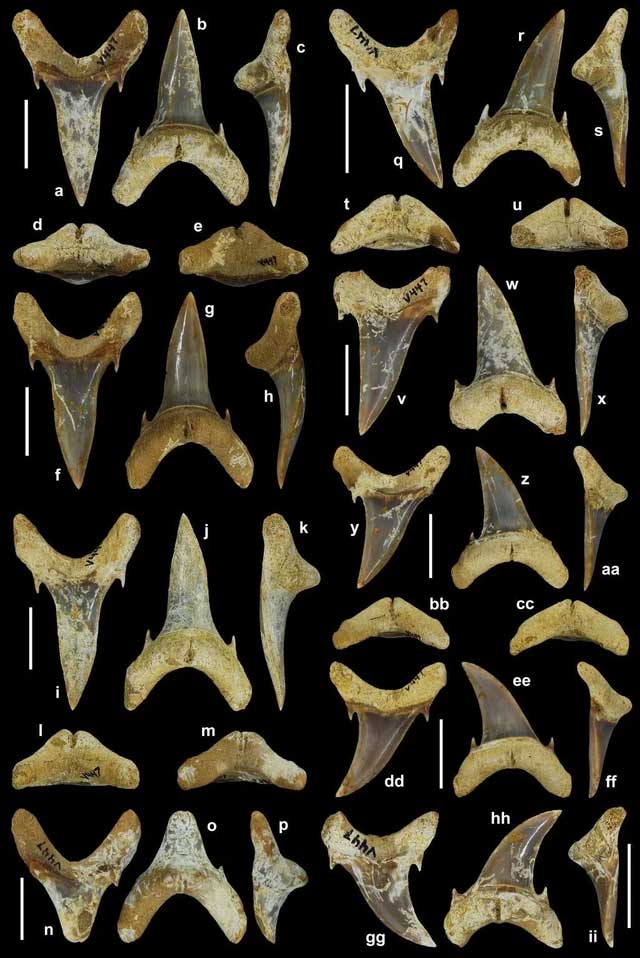A newly identified species in Alabama, USA, has taken advantage of the asteroid disaster to dethrone the “ruler of the ocean,” the predatory ichthyosaurs.
A series of 65-million-year-old fossils from Alabama have been identified by scientists as belonging to a completely new species of shark, one of the top ocean predators that ever existed on the planet.
The fossils consist of a series of terrifying, extremely sharp teeth, indicating that the “owner” must have been a fearsome carnivore.

Fossil teeth discovered in Alabama, USA – (Photo: SCITECH DAILY).
The new species has been named Palaeohypotodus bizzocoi, discovered quite by chance.
According to SciTech Daily, a few years ago, one of the authors of the study, Dr. Hun Ebersole, Director of Collections at the McWane Science Center (USA), was examining some fossils at the Alabama Geological Survey.
He discovered a small box filled with fossilized teeth collected 100 years ago in Wilcox County. As a shark expert, he still could not identify what species they belonged to.
Therefore, Dr. Ebersole and his colleagues decided to conduct further research.
Not only did they find a new species of shark, but they also uncovered one of the marine monsters that re-emerged at the beginning of the Paleogene period.
The Paleogene period is the geological period following the Cretaceous period. The transition between these two periods is marked by the disaster of the Chicxulub asteroid, which wiped out all dinosaurs and their relatives like pterosaurs in the sky, ichthyosaurs, and mosasaurs in the ocean.
Before the mass extinction, ichthyosaurs were believed to be the top predators in the ocean food chain.
Approximately 75% of life on Earth disappeared during this extinction event. This also opened the door for new dominators.
Although not very large, Palaeohypotodus bizzocoi quickly emerged from the dark period to become the number one ocean predator at the beginning of the Paleogene, a time when underwater habitats were just beginning to recover.
During the early Paleogene, much of the southern half of present-day Alabama was covered by warm, shallow tropical to subtropical oceans.
This ancient habitat was still enveloped in a mysterious ocean, making the discovery of this transitional aquatic monster extremely significant.
“Similar discoveries allow us to gain deep insights into how life in the ocean recovered after major extinction events and also enable us to predict how global events impact today’s organisms,” said Dr. Lynn Harell from the Alabama Geological Survey, a co-author of the study.


















































